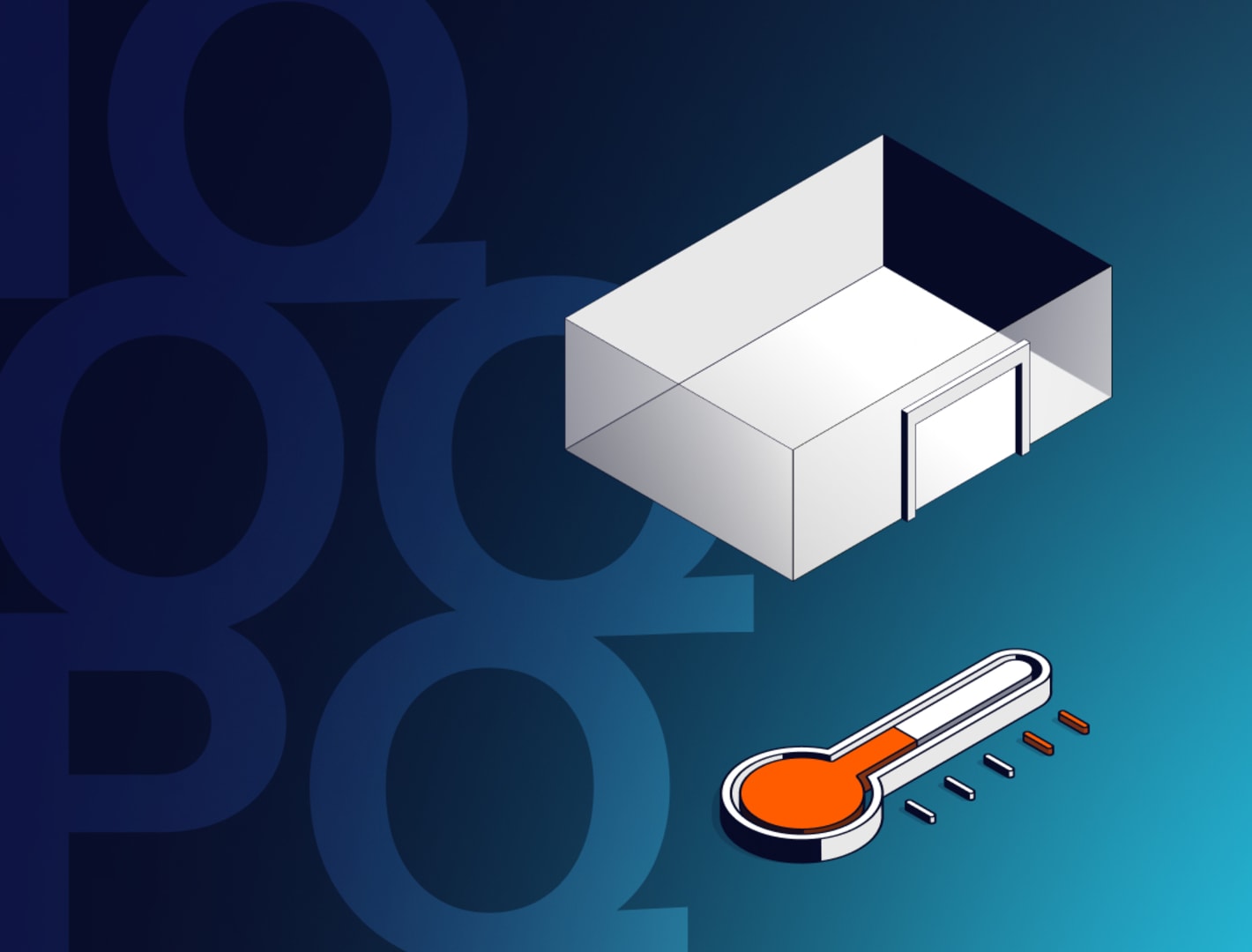IQ, OQ, PQ for cold storage rooms

Adam Hartmann-Kruckow
How to qualify walk-in cold rooms in pharma
Cold storage rooms are critical for pharma, but qualifying them can be complex and time-consuming. This guide walks you through IQ, OQ, and PQ for walk-in cold rooms step by step – from URS and risk assessments to documentation aligned with GMP, GDP, FDA, and WHO requirements.
Get templates aligned with EU GMP Annex 15 expectations and FDA terminology to speed up planning, execution, and documentation.

Note
This guide is for educational use only and does not replace official regulations or professional judgment. You are responsible for making sure that IQ, OQ, and PQ are carried out in line with EU GMP Annex 15, FDA 21 CFR Part 211, and other GxP standards. The protocol templates provided are examples. They must be adapted, reviewed, and approved within your company’s quality management system before use.
Cold storage rooms are critical for pharma, but qualifying them can be complex and time-consuming. This guide walks you through IQ, OQ, and PQ for walk-in cold rooms step by step – from URS and risk assessments to documentation. Learn how to align with GMP, GDP, FDA, and WHO requirements, cut out redundant work, and stay inspection-ready without requalifying more than necessary.
Cold storage rooms – also called walk-in cold chambers and sometimes simply referred to as cold storage in pharma logistics – are the backbone of pharmaceutical storage for vaccines, biologics, and other temperature-sensitive products. Auditors expect documented IQ, OQ, and PQ to prove these rooms consistently maintain +2 °C to +8 °C or other specified ranges. This guide shows you how to qualify cold rooms in line with EU GMP Annex 15, FDA 21 CFR Part 211, GDP, and WHO guidelines – with practical steps to stay audit-ready while avoiding unnecessary requalification work.
What are IQ, OQ, and PQ for cold rooms?
IQ (installation qualification), OQ (operational qualification), and PQ (performance qualification) are the three stages of equipment qualification defined in GMP Annex 15. They ensure that cold rooms are installed correctly, operate as intended, and perform reliably under routine use. Together, they provide the documented evidence regulators require for compliance and patient safety.
Also read:IQ, OQ, PQ in pharmaceuticals: complete guide to equipment qualification and compliance
Why are IQ, OQ, and PQ required for cold rooms?
Cold rooms are large-volume storage environments that present more complexity than single units. Qualification is required to demonstrate that temperature and humidity are controlled uniformly, alarms function, and SOPs are effective.
- EU GMP Annex 15: Requires risk-based qualification and traceability.
- WHO TRS 961 Annex 9: Specifies requirements for mapping and monitoring of large chambers.
- GDP: Requires documented proof that distribution environments maintain product quality.
Also read:IQ, OQ, PQ in pharmaceuticals: complete guide to equipment qualification and compliance
How to plan IQ, OQ, and PQ for cold rooms
Planning avoids costly deviations and wasted mapping runs. For cold rooms, regulators expect mapping across a larger 3D grid and careful review of HVAC design.
- Define URS: Specify operating ranges (e.g., +2 °C to +8 °C) and stability requirements.
- Risk assessment: Consider HVAC failures, door openings, and product loading patterns.
- Acceptance criteria: Define clear limits for stability, recovery, and alarm response.
- Probe strategy: Define the number and placement of mapping probes in line with WHO guidance.
- SOP alignment: Ensure SOPs cover loading, door control, alarm response, and deviations.
Also read: How to write a URS for pharmaceutical storage areas and TCUs

Download your free IQ/OQ/PQ protocol pack
Get instant access to an all-in-one protocol pack: From URS checklists to IQ, OQ, and PQ protocol templates. All you need to plan the qualification of temperature-controlled equipment and environments in pharmaceuticals, biotech, and logistics, aligned with WHO, FDA, GMP/GDP/GxP guidelines.
How to perform installation qualification (IQ) for cold rooms
IQ ensures the room is built and installed as designed, with all utilities and components documented.
- Documentation: Verify design drawings, HVAC schematics, and SOPs are controlled.
- Installation checks: Confirm insulation, doors, sensors, and HVAC units match design.
- Utilities: Verify power supply, backup generators, and environmental limits.
- Calibration certificates: Ensure probes and reference standards are traceable to ISO/IEC 17025.
- Configuration: Record alarm setpoints, notification pathways, and monitoring systems.
Acceptance criteria: Room installation must match design documents and URS.
How to perform operational qualification (OQ) for cold rooms
OQ challenges cold room systems under controlled tests to confirm correct functioning.
- Functional checks: Verify door seals, HVAC response, controls, and monitoring system.
- Alarm testing: Simulate high and low excursions, door open, and power loss.
- Mapping under stress: Conduct mapping with an empty room or test load to identify hot/cold spots.
- Recovery tests: Open doors or introduce controlled heat loads and measure recovery.
- Data integrity: Confirm audit trail, time sync, and user access control.
Acceptance criteria: All alarms respond within limits, mapping shows uniformity, and recovery meets criteria.
How to perform performance qualification (PQ) for cold rooms
PQ demonstrates consistent performance in daily operation with representative loading.
- Mapping under load: Conduct mapping with product or simulants in typical configurations.
- Seasonal variation: Account for summer/winter extremes in mapping studies.
- Alarm response: Verify escalation procedures function under real use.
- Continuous monitoring: Confirm probe placement matches mapping hot/cold spots.
Acceptance criteria: PQ passes if room maintains defined ranges and alarms function in daily use.
Also read:IQ, OQ, PQ for warehouses
What documentation do auditors check during cold room qualification?
Auditors expect more than just a completed mapping report – they want full traceability from URS through executed protocols, data integrity controls, and CAPA records. Cold rooms are often scrutinized because of their size and complexity, making documentation a frequent source of findings during inspections.
- Mapping reports: Probe placement diagrams, grid design, and raw data.
- Calibration certificates: Probes and references with traceability.
- Traceability matrix: URS to tests and results.
- Deviations and CAPA: Impact assessment, root cause, corrective actions.
- Change control: Documentation of repairs, upgrades, or relocations.
Also read:WHO temperature mapping guidelines
How to reduce requalification workload for cold rooms
Requalification can be one of the most resource-intensive activities for quality teams, especially if mapping must be repeated frequently. Regulators now encourage risk-based requalification strategies that focus on changes, deviations, and data trends rather than fixed annual cycles. A smart approach can save significant time and cost while still satisfying compliance.
**Also read:**Guidelines for continuous temperature mapping](/temperature-mapping/continuous-temperature-mapping/)
- Continuous mapping: Use fixed monitoring sensors aligned with mapping probe positions.
- Risk-based triggers: Re-qualify only after HVAC repairs, relocation, or recurring deviations.
- Data centralization: Store calibration, mapping, and deviation records in one validated system.
- Standardized templates: Use uniform protocols across sites for consistency.
Also read:Continuous mapping service for GMP/GDP - how it works
Download free IQ/OQ/PQ protocol template pack
Get a step-by-step set of protocol templates and checklists to plan and document IQ, OQ, and PQ for cold rooms and other temperature-controlled environments, aligned with common auditor expectations in GMP and GDP.

FAQ about IQ, OQ, PQ for cold storage rooms
Learn more
- Also read: IQ, OQ, PQ in pharmaceutica guide
- Also read: IQ, OQ, PQ for TCUs
- Also read: IQ, OQ, PQ for warehouses
- Also read: IQ, OQ, PQ for incubators
- Also read: GxP temperature mapping guidelines
IQ, OQ, and PQ services for GMP and GDP
One-stop for your entire validation process
(and all other thermal compliance needs) Get your cold room and other validations done faster with Eupry’s temperature qualification services built for GMP and GDP.
- One provider for the full validation
- Cost- and time-optimized processes
- Full GxP compliance confidence
Also read: Our continuous mapping solution
